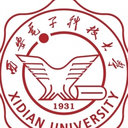Identification and preliminary characterization of ubiquitin C terminal hydrolase 1 (UCHL1) as a biomarker of neuronal loss in aneurysmal subarachnoid hemorrhage.
Հիմնաբառեր
Վերացական
By using two different approaches, ubiquitin C-terminal hydrolase 1 (UCHL1) was identified as a potential cerebrospinal fluid (CSF) biomarker of neuronal loss in aneurysmal subarachnoid hemorrhage (ASAH) and presumably other CNS damage and disease states. Appropriate antibodies and a sensitive ELISA were generated, and the release of UCHL1 into CSF was compared with that of pNF-H and S100beta in a cohort of 30 ASAH patients. Both UCHL1 and pNF-H showed persistent release into CSF in almost all patients in the second week postaneurysmal rupture (AR), and S100beta levels rapidly declined to baseline levels in 23 of 30 patients. Seven of thirty patients showed persistently elevated S100beta levels over the first 5 days post-AR and also had relatively higher levels of pNF-H and UCHL1 higher compared with the rest. These patients proved to have very poor outcomes, with 6 of 7 expiring. Patients who did reduce S100beta levels tended to have a better outcome if pNF-H and UCHL1 levels were also lower, and elevated UCHL1 levels in the second week post-AR were particularly predictive of poor outcome. Acute coordinated releases of large amounts of UCHL1, pNF-H, and S100beta in 16 of 30 patients were observed, suggesting sudden loss of brain tissues associated with secondary events. We conclude that measurement of the CSF levels of these proteins reveals details of ASAH progression and recovery and predicts patient outcome.



